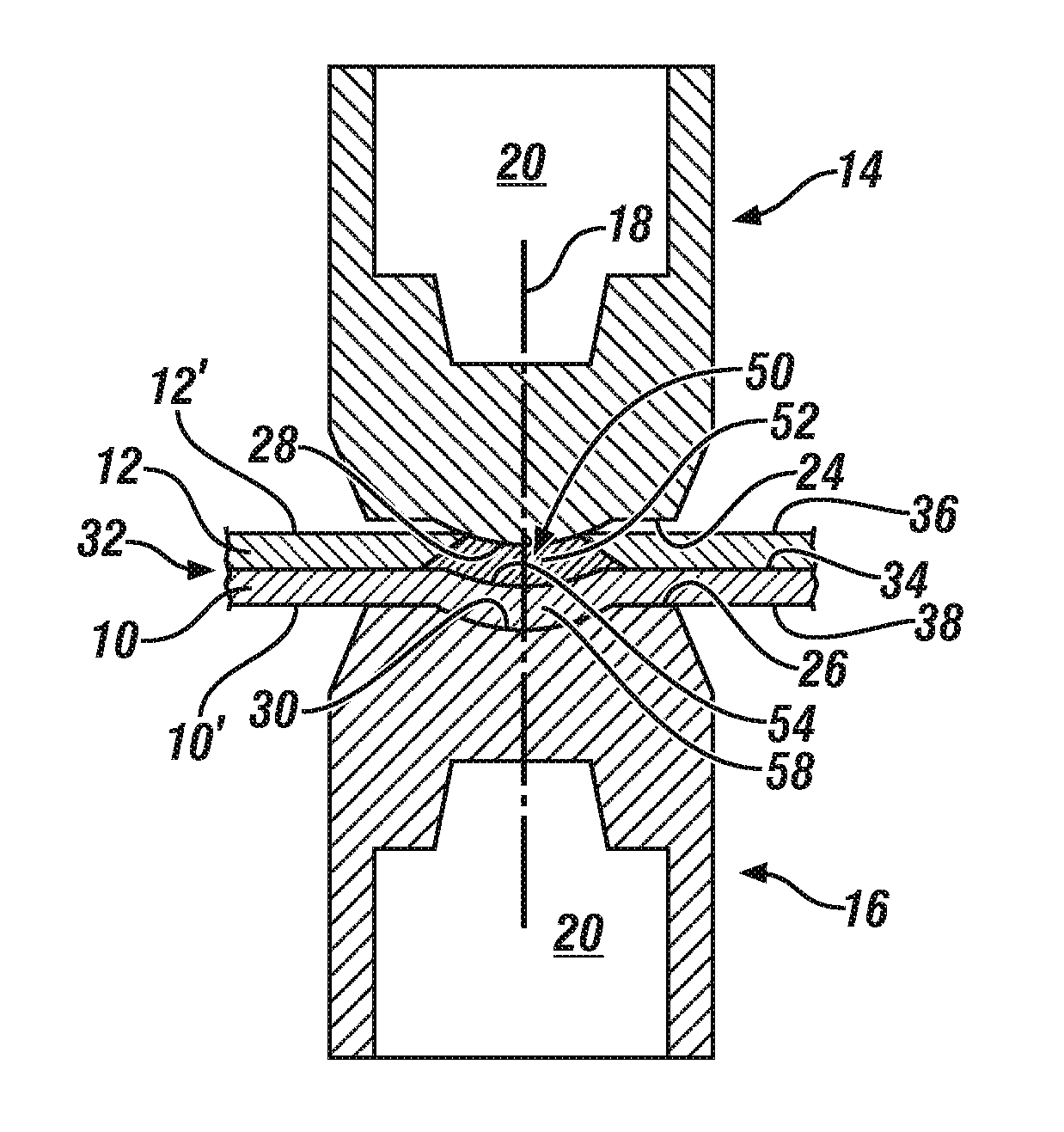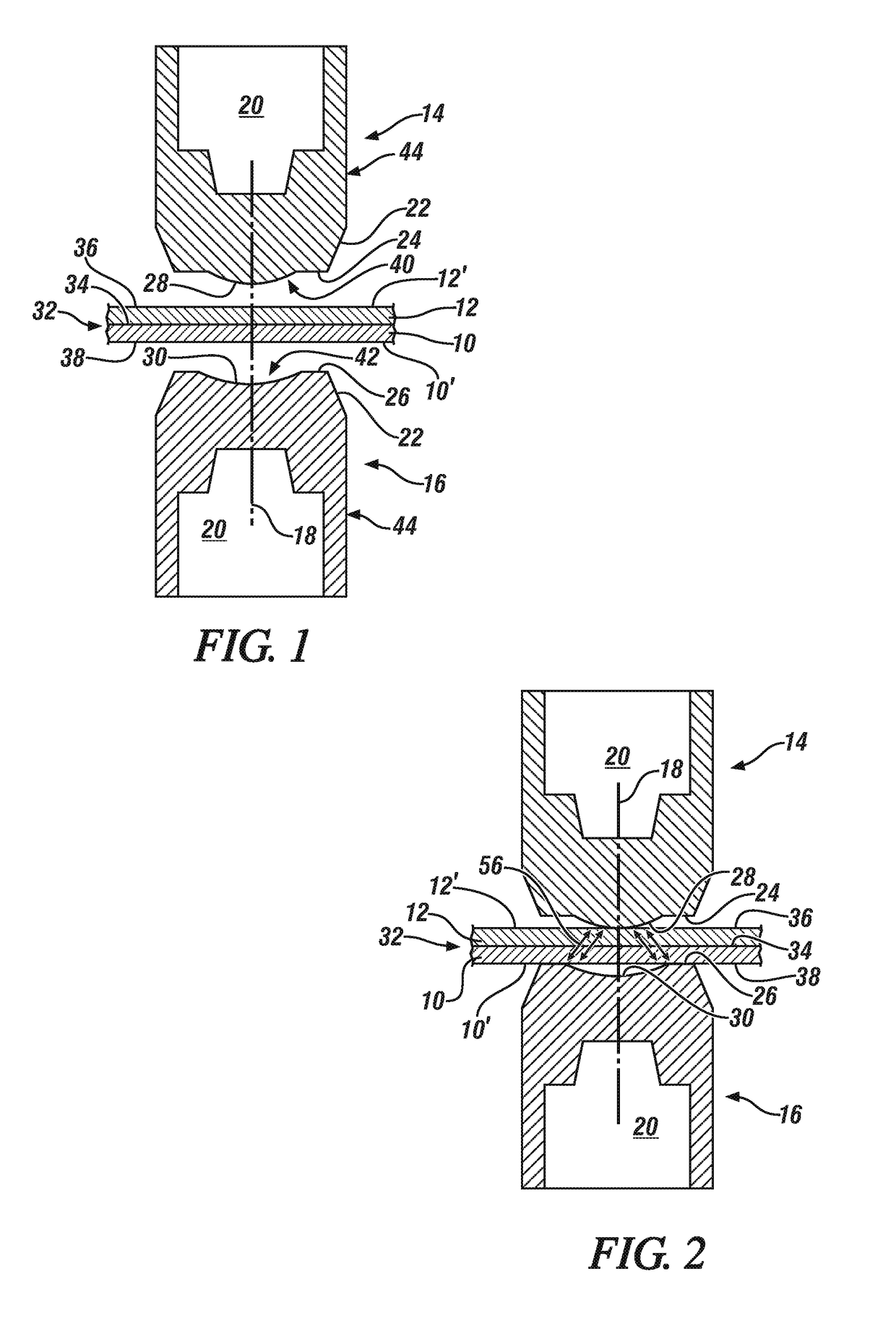Mating electrodes for resistance spot welding of aluminum workpieces to steel workpieces
a technology of resistance spot welding and welding electrodes, which is applied in the direction of electrode features, welding/soldering/cutting articles, manufacturing tools, etc., can solve the problems of surface oxide residues, surface oxide residues, and weld defects most commonly found in such a disruptive dispersion, and achieve the effect of reducing the strength of the join
- Summary
- Abstract
- Description
- Claims
- Application Information
AI Technical Summary
Benefits of technology
Problems solved by technology
Method used
Image
Examples
Embodiment Construction
[0017]The present disclosure pertains to the design of opposing spot welding electrodes for use in forming resistance spot welds between an aluminum workpiece and a steel workpiece that are located adjacent to one another in a workpiece stack-up assembly. The spot welding electrodes used to form spot welds between an aluminum workpiece and a steel workpiece include mating weld faces. Specifically, one electrode has a weld face with a convex central portion for engagement with an outer surface of the stack-up assembly proximate the aluminum workpiece and the other, opposing electrode has a weld face with a complementarily shaped and sized concave central portion for engagement with the opposing outer surface of the stack-up assembly proximate the steel workpiece. The combination of the spot welding electrodes with their mating weld faces distributes the electrical current passing between the facing weld faces along a radially outwardly expanding flow path that extends from the electr...
PUM
| Property | Measurement | Unit |
|---|---|---|
| thicknesses | aaaaa | aaaaa |
| melting points | aaaaa | aaaaa |
| melting points | aaaaa | aaaaa |
Abstract
Description
Claims
Application Information
 Login to View More
Login to View More - R&D
- Intellectual Property
- Life Sciences
- Materials
- Tech Scout
- Unparalleled Data Quality
- Higher Quality Content
- 60% Fewer Hallucinations
Browse by: Latest US Patents, China's latest patents, Technical Efficacy Thesaurus, Application Domain, Technology Topic, Popular Technical Reports.
© 2025 PatSnap. All rights reserved.Legal|Privacy policy|Modern Slavery Act Transparency Statement|Sitemap|About US| Contact US: help@patsnap.com



